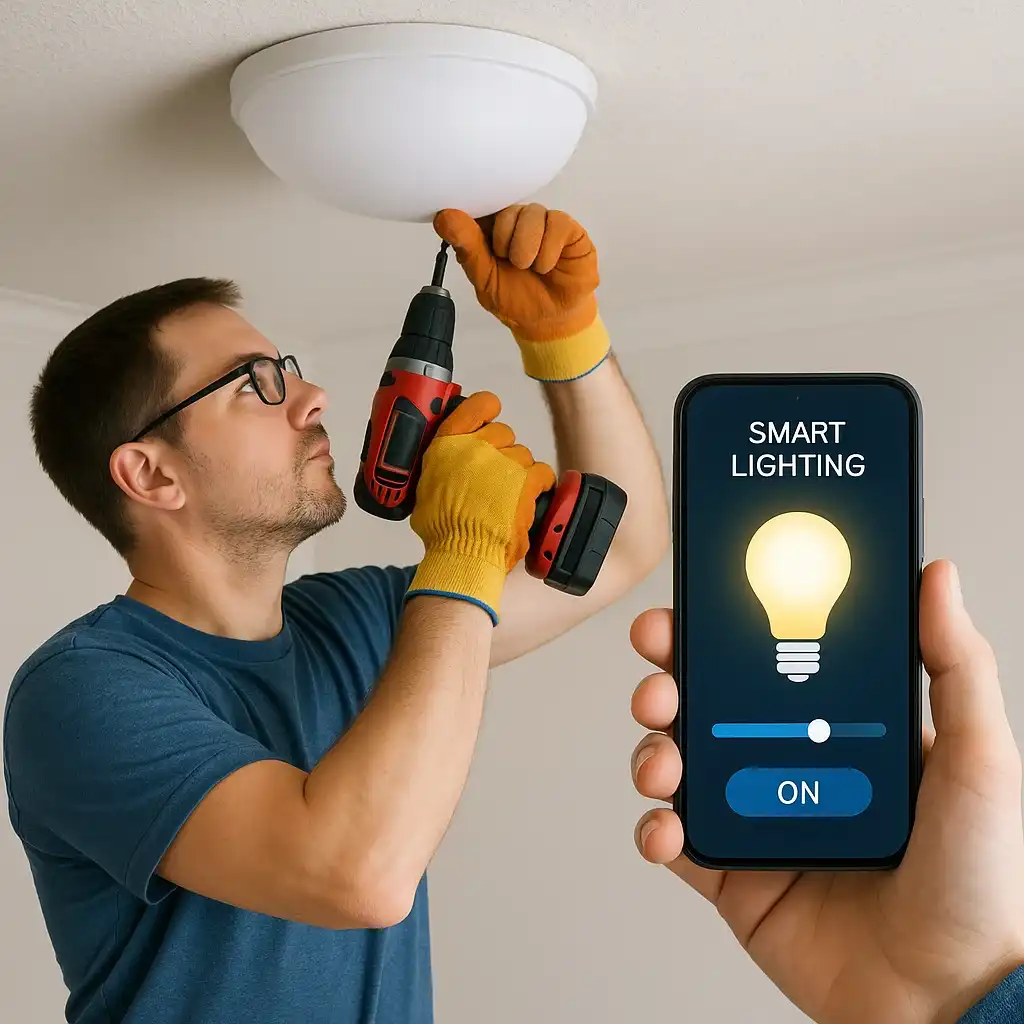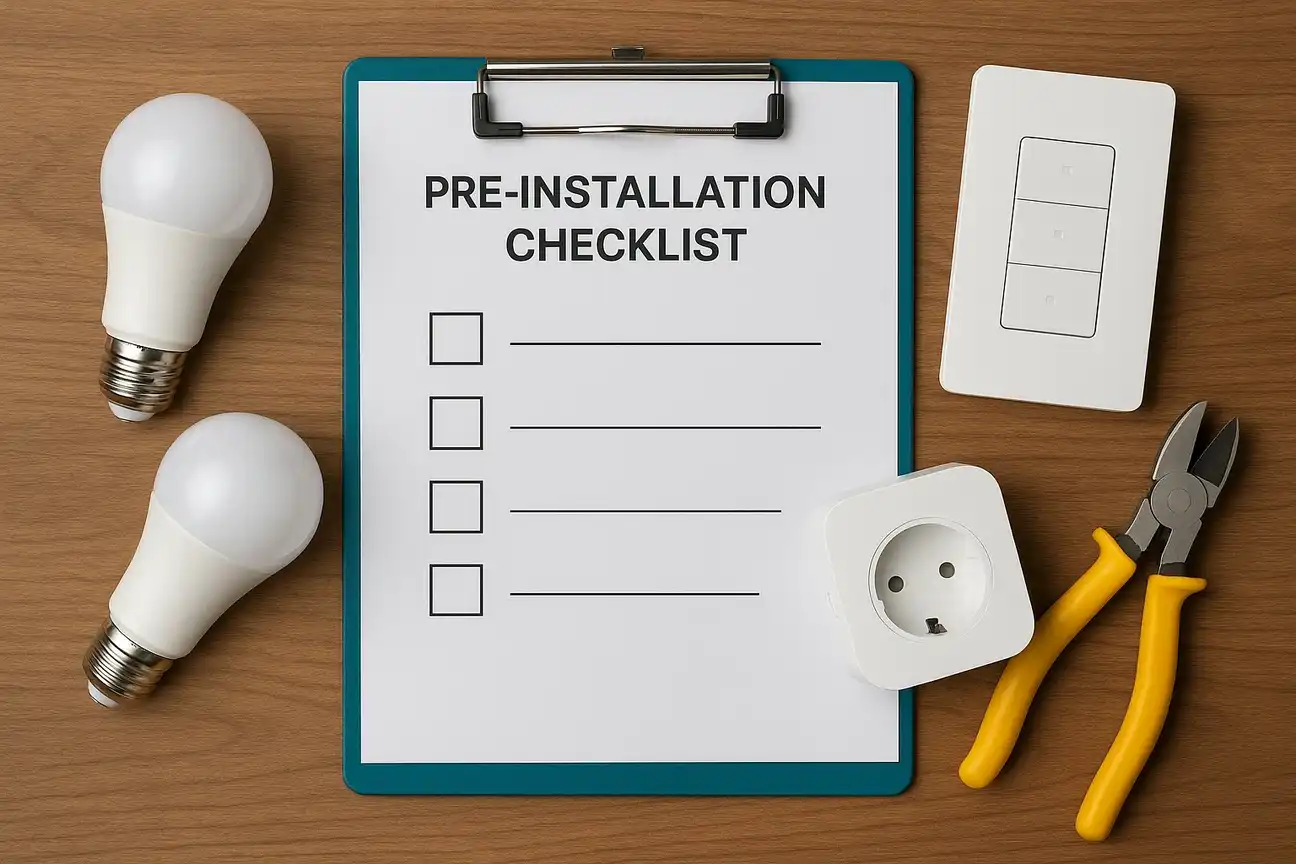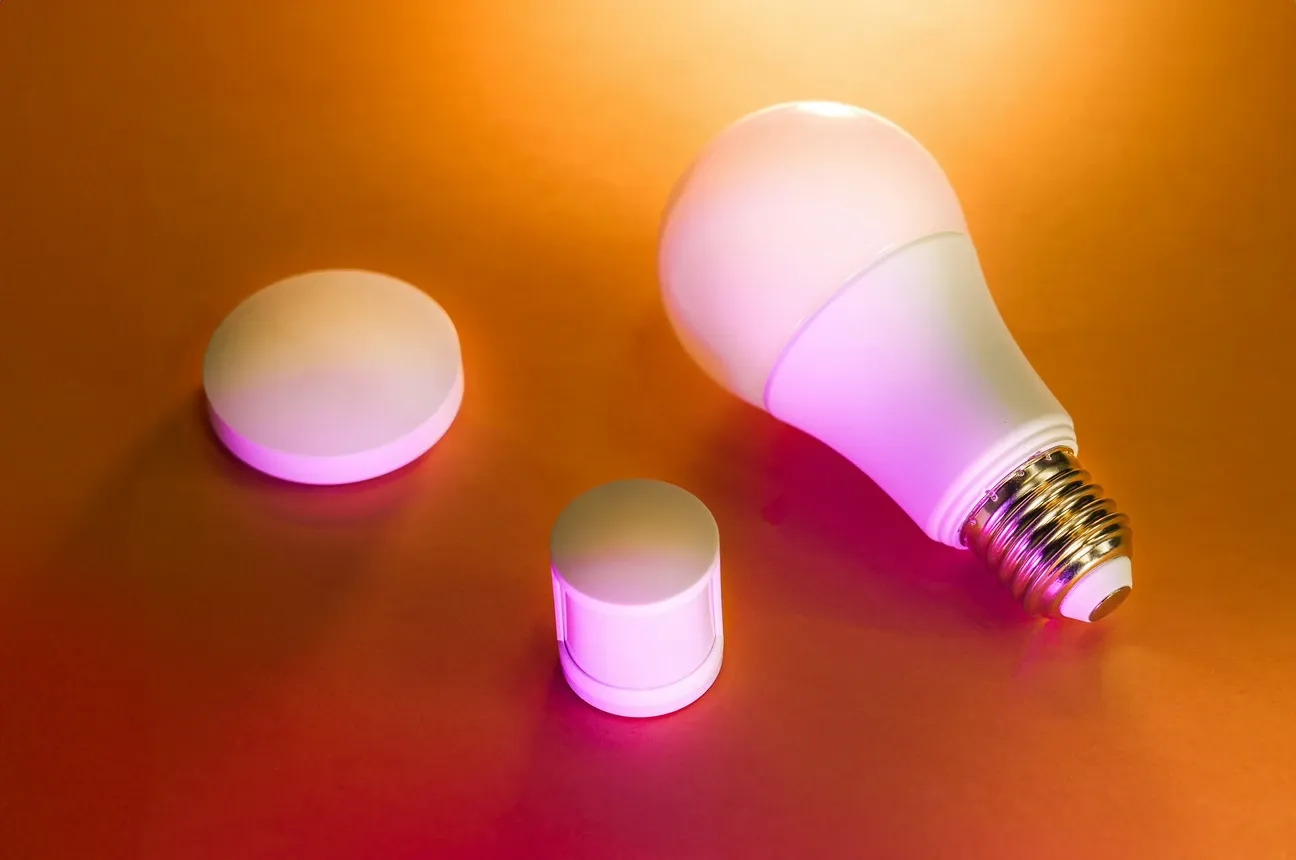Smart lighting installation is made easy when you turn ordinary lights into a smart, automated system without any hassle. This comprehensive tutorial gives you everything you need: planning, installation, voice control, tips on energy savings, security, and outdoor scenes. It will help you master your setup from start to finish with step-by-step instructions designed to show how simple and easy the process is for anyone.
Each step is explained clearly in this complete tutorial, making smart lighting installation easier than ever before.
Why "Smart Home Lighting Installation" Is a Game-Changer
Updating your lights is more than just flipping a switch. A well-done smart home lighting installation offers:

- Energy savings with efficient LEDs, schedules, and motion triggers
- Custom ambience with scenes that match your mood or activity
- Better security with occupancy simulation and motion-activated lighting
- Easy voice control and remote operation via apps or assistants
Together, these features turn your lighting upgrade into a smarter lifestyle.
Smart lighting also lets you personalize beyond simple on/off control. Imagine a movie night preset where lights dim automatically when your streaming device turns on. Or a gradual wake-up light that mimics sunrise for a healthier start to your day.
These ideas blend wellness, entertainment, and convenience. Plus, smart lighting is scalable-you can start with a few bulbs and add smart plugs, thermostats, or even a video doorbell. This keeps your investment manageable and offers long-term benefits.
A popular and trusted brand for this approach is Philips Hue. Philips Hue offers a range of products for all smart home lighting needs, from basic bulbs to advanced outdoor lights.
The Philips Hue Bridge acts as the central hub. It enables advanced automation and smooth integration with voice assistants and other smart devices.
A newer option, the Philips Hue Bridge Pro, is designed for larger setups and power users. It offers better reliability, faster automations, and pro-level integration, while staying compatible with existing Hue lights and accessories.
For creative accent lighting, the Philips Hue Lightstrip Plus is a flexible strip that you can install under cabinets, behind TVs, or anywhere you want customizable light effects.
For outdoor use, the Philips Hue Lily Outdoor Spot Light lights up gardens, pathways, and other outdoor spots with bright, controllable light.
On the bulb side, the Philips Hue Smart 60W A19 is a versatile, dimmable bulb that fits everyday fixtures and offers full smart features. For a simpler, more energy-efficient option, the Philips Hue White A19 LED Smart Bulb provides basic on/off and dimming control. Together, these products show how Philips Hue supports a flexible, expandable smart lighting system that grows with your home and lifestyle.
The Philips Hue ecosystem connects easily, letting all products communicate through the Hue Bridge and the user-friendly Hue app. This app gives you full control over your lighting, including scheduling, scene creation, and real-time adjustments, all from one place.
It works with major smart home systems like Amazon Alexa, Google Assistant, and Apple HomeKit. This ensures smooth voice control and integration with other smart devices.
Whether you are a beginner setting up your first smart bulb or an advanced user creating complex automations, the Philips Hue system offers a scalable, reliable solution. Installation is simple, with clear instructions and flexible options for different skill levels.
The mix of strong hardware, versatile software, and wide compatibility makes Philips Hue a top choice for those wanting a smart lighting system that adapts and grows with their needs.
Beyond Philips Hue, Govee Light strips are a budget-friendly way to add dramatic accent lighting to cabinets, desks, and entertainment areas. The Govee LED Strip Light M1 offers bright output, addressable color zones, smooth dimming, and rich scenes in the Govee app.
It also supports music-reactive effects using your phone’s microphone or an optional controller. This lets your bias lighting pulse with movies or playlists. Installation is simple: measure, clean the surface, stick the strip, connect to 2.4 GHz Wi‑Fi, then enable voice control with Amazon Alexa or Google Assistant.
If you want vivid accents without rewiring, the M1 is an easy add-on that works well with switches and bulbs already in your smart home.
Pre-Installation Checklist

Before starting your smart home lighting installation, make sure you are ready:
- Audit your lighting: check sockets, fixture types, and bulb shapes.
- Check compatibility: Make sure bulbs or switches match your ecosystem (Wi-Fi, Zigbee, Thread).
- Verify network and hub readiness: Have strong 2.4 GHz Wi‑Fi or a hub (Hue Bridge or Hue Bridge Pro) nearby.
- Set up required apps and voice assistant accounts.
- Plan safety: Know how to turn off power during installation.
Essential Prep Steps Before Installation
A successful smart lighting installation starts with good preparation. Beyond the basic checklist, a few extra steps save time, reduce frustration, and help you design a system that fits your lifestyle.
A reliable smart lighting system makes daily life easier by giving you flexible control over all your home’s lights. Whether you use smart bulbs, switches, or strips, the right setup ensures each room has the perfect mood and brightness.
Modern solutions let you control lights via apps and remotely, so you can adjust brightness, colors, or schedules from anywhere. Integration with other home devices through a smart hub keeps everything connected and in sync.
When planned well, your smart lighting becomes the heart of your home automation, offering comfort, security, and energy savings.
Define Lighting Goals
Think about your main goals. Do you want brighter workspaces, mood-setting colors, or better security with motion sensors?
This helps you pick the right devices-bulbs, switches, or strips-for each room. For example, warm dimmable lights work well in bedrooms, while color-changing strips add energy to a gaming area.
Understand Product Types
Not all smart lights work the same. Some use Wi-Fi for direct control. Others use Zigbee or Thread through a hub like the Philips Hue Bridge.
Each has pros and cons: Wi-Fi is easy to set up but can slow your network. Hub-based systems support bigger setups and offer more stability. Knowing this helps you choose the best option.
Evaluate Your Network Strength
Strong, steady Wi-Fi is key for smart home devices. Test coverage in every room where you plan to install lights. If you find weak spots, consider a mesh Wi-Fi system or range extenders.
Without good connectivity, automation and voice control might fail.
Gather Tools and Safety Equipment
Have basic tools ready: screwdriver, ladder, voltage tester. Use safety gear like insulated gloves and protective glasses to avoid accidents.
Being prepared makes installation smoother and safer.
Plan for Scalability
Many start with just a few smart bulbs. But it’s smart to plan for future growth. Choose systems that easily connect with other smart devices like thermostats, cameras, and plugs.
This keeps your setup flexible and cost-effective as your needs change.
Consider Professional Support
DIY works for many, but bigger or complex projects-like installing 20 lights during a remodel-may need pros. Philips Hue even offers professional installation services for peace of mind and the best results.
Safety First
Always put safety first. Turn off power at the breaker before handling fixtures or wiring. Double-check connections. If unsure, ask a qualified electrician.
Following safety steps protects your home, light fixtures, and devices.
By following these extra prep steps, your smart lighting installation will be safe, efficient, and tailored to your lifestyle. The better you plan, the easier the installation-and the more rewarding your smart lighting system will be.
Step-by-Step Smart Home Lighting Installation
1. Safely Power Down & Replace
Turn off power, let bulbs cool, then carefully replace your old bulbs or switches.
2. Install Smart Bulbs or Switches
Screw in or wire smart bulbs and switches. Note: smart switches may need neutral wires or wiring knowledge.
3. Pair via App or Hub
Find each light, give it a clear name (like “Kitchen Island”), and set it up for voice control and routines.
4. Link to Voice Assistant
Enable integrations in Alexa, Google Home, or HomeKit. Then test a voice command like “Turn on Kitchen Island.”
5. Create Scenes & Automation
Build routines like “Good Morning” or “Night Mode.” These workflows add real magic and improve your experience.
6. Troubleshoot & Keep Updated
If pairing fails, check range, reset the bulb, then try again. Keep firmware updated-they often fix bugs.
7. Document & Refine
Write down names and performance notes. Adjust as needed to keep your setup working well and easy to use.
Advanced Setups & Ideas
- Smart Switches vs. Bulbs: Use switches for whole-room control; bulbs for color and individual automation.
- Outdoor & Security Lighting: Try smart PIR lights or smart bulbs-great for driveways or garden lighting.
- DIY or Professional? DIY suits tech-savvy users who want to save money, while pros offer safety and reliability.
- Visual & Technical SEO Tips: Use HowTo schema, alt-text-rich images, optimized filenames (like
diy-smart-home-lighting-installation.jpg), and step-by-step visuals to boost visibility.
FAQs: Quick Answers on Smart Home Lighting Installation
Can I install smart lights without a hub?
Yes-Wi-Fi and Bluetooth bulbs work alone, but a hub gives better range and automation.
Are smart switches a better choice than bulbs?
Switches control whole fixtures and work with regular bulbs; bulbs offer color and mood control. Choose based on your needs.
Do smart lights really save energy?
Absolutely-LED efficiency, motion controls, and scheduling combine for real savings.
Is outdoor smart lighting practical?
Yes-motion-activated and smart bulbs work well outdoors for security and looks.
Conclusion
Your smart home lighting installation is more than swapping bulbs-it’s about creating a more efficient, secure, and personalized lighting experience. With this guide, you're not just installing-you’re building smart living.
